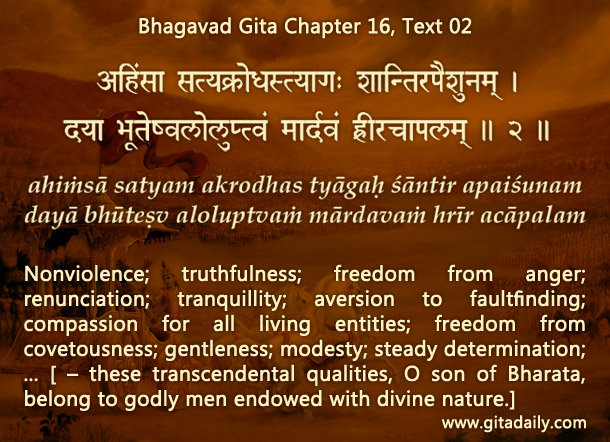Why seeing the good in bad people can be a double-edged sword – Know when seeing the good in bad people is an expression of compassion and when it is an excuse for decadence.
It’s relatively easy to see the world in black and white categories, to divide people into “good” and “bad,” seeing only the good in good people and only the bad in bad people. The fact, however, is that people are complicated, and if our vision is to evolve, we need to go beyond simplistic black-and-white categories. We need to become comfortable with the muddle in the middle, and one aspect of becoming a considerate, realistic human being is learning to see the good in bad people.
The capacity to see such good is an expression of compassion. The Bhagavad Gita 16.2 recommends seeking such goodness by declaring aversion to fault-finding as a characteristic of a godly nature. Only with compassion can we truly be of service to others, including those who need and deserve such help. If we, instead of being compassionate, are judgmental, dismissive, or disrespectful of those who do not meet our expected moral standards, we will eventually end up becoming cold and hard-hearted toward most of humanity. By seeing the good in bad people, we can fan that goodness and help them move from the dark side of the moral spectrum toward the light.
While such compassion is essential, it’s also essential to be cautious. The call to see the good in bad people can sneakily become a license or excuse to justify decadence, wherein we not only do nothing about elevating people on the moral spectrum but end up justifying their further slide down toward the dark side. In the name of seeing the good in bad people, we may well end up blurring the very categories of good and bad, allowing the muddle in the middle to expand until it eclipses the categories of black and white altogether.
The same Gita chapter that urges us to avoid fault-finding also emphasizes moral categories, with the chapter itself titled “The Divine and Demonic Natures,” where these two natures reside at the opposite ends of the moral spectrum. To prevent our looking for good in others from turning into an excuse for decadence, we need to complement the vision of compassion with the intention of compassion. This means we don’t just see good in others, even in those who may be considered “bad,” but also seek to bring out that good in them.
Without this intention, the vision of compassion will remain passive and may even become a rationalization of moral corruption. By keeping this intention clear and strong, we can ensure that our compassionate vision becomes a pathway to increasing the good in others rather than increasing the bad within them.
Summary:
- Seeing the good in others is a sign of moral maturity, allowing us to see beyond simplistic black-and-white categories to appreciate that most people reside in a mixed moral space.
- By seeing the good in bad people, we can express compassion, facilitating the manifestation of goodness within them.
- However, if the vision of compassion is not paired with the intention to bring out the good within others, it can become an excuse to let others stagnate or even morally degrade.
Think it over:
- How is seeing the good in bad people a desirable and essential expression of compassion?
- How can such a vision become an excuse for decadence?
- How can we prevent the vision of compassion from becoming a justification for degradation?
***
16.02 Nonviolence; truthfulness; freedom from anger; renunciation; tranquillity; aversion to faultfinding; compassion for all living entities; freedom from covetousness; gentleness; modesty; steady determination; … [– these transcendental qualities, O son of Bharata, belong to godly men endowed with divine nature.]





Leave A Comment